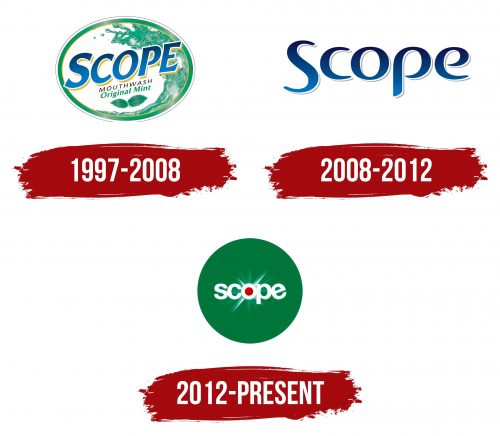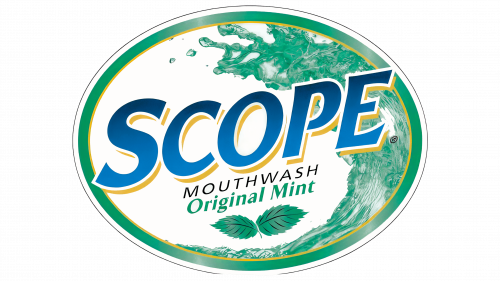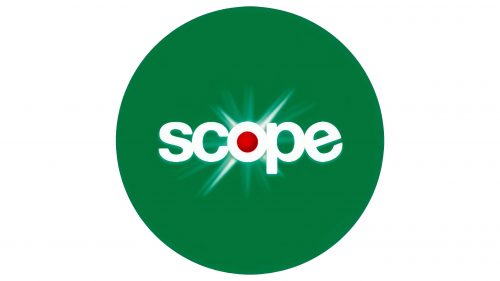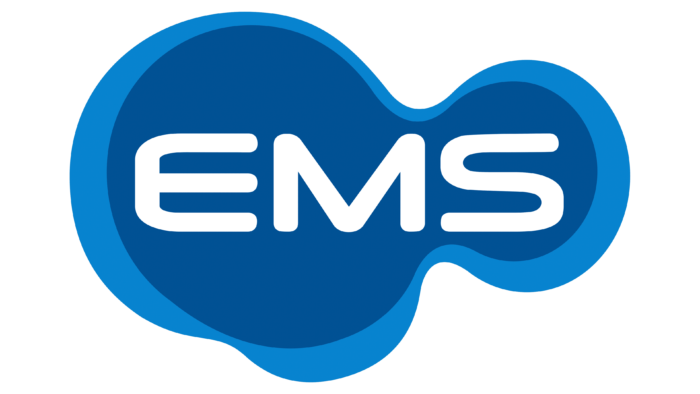The Scope logo is hard to miss or ignore. It shines with its contrast. There is no excess or cluttered text. Everything is concise and clear, and the key aspects are presented in an accessible way. The logo has precise lines and shapes, using figures and symbols to harmonize all elements.
Professionals worked on creating the brand identity for Scope, which belongs to the globally renowned company Procter & Gamble (P&G). They chose simple geometric forms that remain recognizable and make the brand popular over the years. Special attention was given to the color scheme. The light yet rich green background looks interesting, conveying natural harmony and purity. In this context, it means that health is priceless. The green color combined with white symbolizes the natural whiteness of teeth. The star in the center of the logo represents shine. All the elements together convey the main aspect of the company’s work: “Our mouth rinses are created for your health!”
The product that entered the market had significant competitive advantages. Compared to other mouth rinses, Scope stood out in several key ways. It did not contain alcohol, allowing for oral hygiene without unpleasant sensations or burning. The discomfort was minimized, which greatly appealed to Americans.
Scope: Brand overview
Scope’s history started in the 1960s when Procter & Gamble (P&G) decided to enter the mouthwash industry. At the time, P&G recognized many opportunities in this relatively new and quickly expanding market.
Development began in P&G facilities in 1966. Unlike the current antiseptic mouthwashes, the company wanted to develop a solution that would efficiently treat bad breath while tasting good. P&G’s research and development team at P&G took many years to create a solution that satisfied these demands.
After many experiments and adjustments, the definitive formula was developed in 1967. The new mouthwash’s visual hallmark was its vivid green hue and fresh mint flavor.
In 1968, the product made its formal debut in the US. By marketing it as a “mouthwash with a good taste,” P&G differentiated its product from rivals by focusing more on health benefits. Due to the effectiveness of this tactic, the brand rapidly became well-liked by customers.
The company maintained fortifying its position in the market during the 1970s. P&G made significant investments in brand marketing and advertising. The slogan “Scope fights bad breath without medicine breath,” highlighting the product’s primary benefit, was a crucial component of the advertising campaign.
The brand started to expand internationally in the 1980s. The product was introduced in several nations, including the UK and Canada. P&G modified its marketing plan for every market to consider regional tastes and customer behavior.
P&G persisted in funding the advancement of the product during the 1990s. A revised version of the mouthwash with improved qualities to fight bad breath was introduced in 1996 due to research to refine the mix.
The brand underwent a phase of diversification in the 2000s. In 2005, the mouthwash line Scope White, which has a whitening effect, was introduced. This was done in response to consumer demand for teeth-whitening and breath-freshening goods.
P&G unveiled Scope Outlast, a cutting-edge product that promised to maintain fresh breath five times longer than conventional mouthwashes, in 2007. This was a major technological advance for the company.
In 2010, the firm introduced a toothpaste range to increase its market share in the oral care industry. This allowed the firm to provide customers with a complete oral care solution.
Scope Dual-Blast, a mouthwash with two functions, was introduced in 2012. It helps fight plaque and freshen your breath.
2014 saw the launch of Procter & Gamble’s Scope Outlast Mouthwash + Toothpaste product range. This creative system contained toothpaste, and mouthwash meant to be used together to maintain fresh breath for an extended period.
Scope Classic Mint Sparkle is a new mouthwash variety that debuted in 2015. It has a stronger mint flavor and a refreshing effect.
In 2016, the company added Scope Advanced, a mouthwash with an enhanced recipe for preventing plaque and foul breath, to its product lineup.
2018 was a significant year for the brand regarding its environmental responsibilities. As part of a larger effort by P&G to use less virgin plastic, the business started making mouthwash bottles out of recycled plastic.
In 2019, a new line of alcohol-free products was launched in response to consumer demand for gentler mouthwash solutions.
2020 saw the release of Scope Teeth Whitening Mouthwash, which expanded the product’s possibilities by combining breath freshening and teeth whitening properties.
In 2021, the company strengthened its position in the natural products market by enhancing its cosmetics with more natural ingredients.
In 2021, the firm continued its environmental drive by increasing the amount of recycled plastic used in its packaging and aiming to make completely recyclable bottles.
The business stated that the new “Fresh Lock” technology would offer a longer-lasting fresh breath effect in 2022. This innovation was included in several of the brand’s products.
Additionally, the firm increased customer engagement through social media and launched several digital campaigns to increase its online presence. These campaigns featured instructional materials on maintaining good dental hygiene and using mouthwash as directed.
In 2023, the company continued funding R&D, concentrating on producing goods promoting overall dental health. As a result, a new product line was introduced that was enhanced with extra ingredients to build tooth enamel and preserve gum health.
The firm sustains its primary positioning of offering fresh breath with a pleasing taste and effectively supports its brand in the oral care market.
Meaning and History
What is Scope?
It is a brand of mouthwash owned by Procter & Gamble. It is designed to give fresh breath and improve oral hygiene by killing germs that cause bad breath. The rinse is known for its minty flavor that leaves a refreshing sensation in the mouth. The brand offers a variety of formulations, including those that provide additional benefits such as teeth whitening and plaque reduction. It is a popular choice for those who want to keep their mouth clean and fresh throughout the day. The product is widely available in supermarkets, pharmacies and online stores.
1997 – 2008
The manufacturer offered its potential customers only freshness. In the first version of the logo, the focus was on the unique properties of the mouth rinses. The goal was to convey to the consumer that hygiene procedures could be pleasant, painless, and effortless. The new product was created with this goal, so the logo must be attractive and informative. The result exceeded expectations.
One emblem created a whole chain of informational elements. The use of colors was particularly successful. White and green served as backgrounds for various image elements, associating with freshness and the whiteness of teeth. A wave and two mint leaves symbolize absolute purity and the product’s eco-friendliness. The elements clearly articulated the product’s essence and content.
The blue tone played a key role, highlighting the brand name with a bright sky color and emphasizing its market advantages. Reliability was also clearly demonstrated. The company succeeded in popularizing the brand and making its product one of the best-selling in America. Yellow was used only as a border for the brand. The italicized font enhanced the visual effect. The letters were larger than average, and the spacing between them was significant. Additions such as indications of composition and flavor helped to capture the attention and gaze of potential customers.
2008 – 2012
The new logo, introduced in 2008, was characterized by specificity, minimalism, and the absence of images. The new era set different trends and priorities. The high demand for the product was the reason for the updates. There was no longer a need to attract attention and gain customer trust: many were already using mouthwashes, and newcomers, once they tried them, became regular customers. The goal was to present the new logo, remind customers of the brand, and repeatedly identify the product.
The logo’s transformation aimed to minimize complexity in perception, demonstrate product quality, and showcase the company’s reliability. Geometric shapes, complex backgrounds, and multifaceted color effects were removed. Only the brand name shone on a solid white background, looking like the center of the universe, like an island in the ocean. This transformation had an interesting effect.
The inscription, designed in a rich blue color, appeared graceful. A white border enhanced the visual effect. Large and massive letters were arranged in a single line, with rounded corners on vowels and consonants.
When shoppers saw the well-known brand on store shelves, they made purchases without hesitation. The target audience grew significantly, including teenagers, adult men and women, and the elderly. Everyone was buying a product with natural ingredients that protected teeth and gums.
2012 – today
The next logo transformation took place in 2012. The identity created at that time is still in use today, which speaks to its originality and appeal. The logo has been functioning successfully for over ten years.
It features a return to some past motifs. A light green tone serves as the background for the main text. The brand used this shade because all green tones are associated with nature, tranquility, and calmness. It attracts attention and emphasizes that with quality mouthwashes, there is no need to worry about health.
The brand name is placed in medium-sized letters at the center, creating a positive perception of the information. The white and green colors are synchronized, making the logo stand out brightly. A red element, whether a dot or a circle, is a magnet for attention, drawing eyes to the logo. Other brands rarely use such a contrasting element, but as it did many years ago, Scope takes experimental steps, presenting what others dare not.







